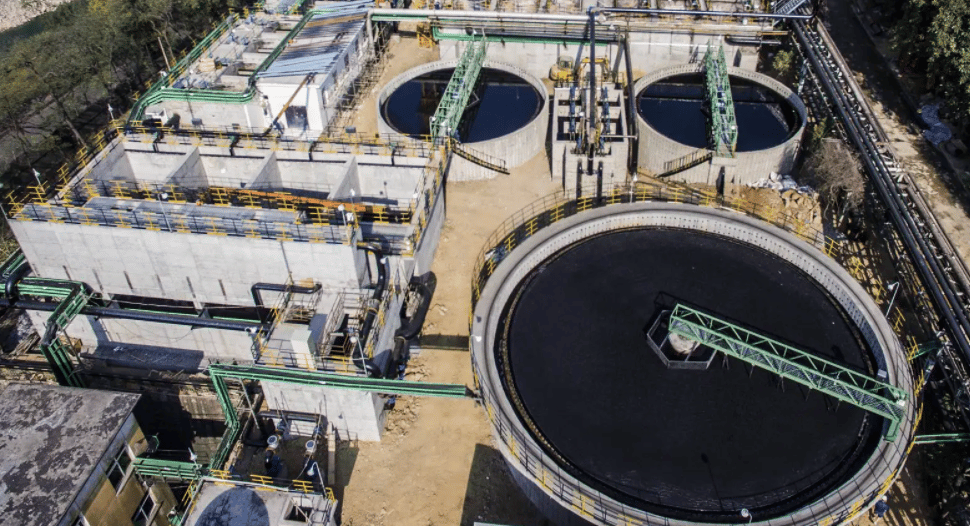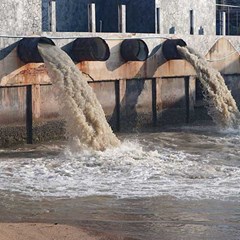Industrial Waste Water Treatment-- Cutting-Edge Technologies for Water Filtration
Wiki Article
Difficulties and Solutions in Hazardous Waste Water Therapy
The therapy of industrial wastewater provides a diverse range of challenges, ranging from rigorous governing conformity to the details of price management and technological constraints. The irregularity in waste composition further makes complex the performance of standard treatment approaches, usually resulting in risen functional expenditures.Regulatory Compliance Obstacles
Exactly how can industrial centers navigate the facility landscape of regulatory conformity in wastewater treatment? The governing structure governing wastewater administration is diverse, typically varying by territory and type of industry. Facilities needs to adhere to government, state, and regional policies that determine effluent high quality standards, discharge limitations, and monitoring needs. Failure to abide can lead to severe charges, consisting of fines and functional shutdowns.To successfully manage these compliance obstacles, facilities ought to apply robust surveillance and reporting systems that guarantee real-time information collection and evaluation. Regular audits and danger analyses can identify prospective conformity gaps, enabling for aggressive adjustments in treatment procedures. Staff member training programs concentrating on governing understanding and best techniques are necessary to foster a society of compliance within the organization.
Additionally, involving with regulative firms can give useful insights and clear up ambiguous guidelines. Facilities might likewise profit from seeking advice from with ecological professionals that specialize in wastewater therapy conformity, guaranteeing that they remain abreast of progressing regulations. By embracing these approaches, industrial facilities can not just meet conformity demands but likewise boost their operational effectiveness and ecological stewardship.
Price and Economic Obstacles
Browsing regulatory compliance in wastewater therapy often presents considerable financial difficulties for commercial centers. The prices related to executing needed therapy modern technologies, maintaining compliance with rigid laws, and managing operational expenses can be daunting. Lots of companies face high initial capital expenditures for the building or upgrading of wastewater treatment plants, which might stress spending plans, specifically for medium-sized and tiny ventures.Furthermore, ongoing functional costs, including chemical, upkeep, and labor inputs, contribute to the financial problem. The changability of rising and fall power costs and the prospective requirement for added financial investments to fulfill advancing laws aggravate these financial pressures. In numerous cases, the lack of financial incentives or assistance from federal government bodies makes it much more tough for organizations to warrant financial investments in sophisticated treatment systems.
Additionally, the financial feasibility of wastewater treatment remedies is usually questioned, especially for markets with tight revenue margins. It is essential for industrial centers to explore cost-efficient techniques, such as embracing ingenious funding options, involving in collaborations, and leveraging emerging modern technologies that can help minimize these economic obstacles while guaranteeing conformity with ecological requirements.

Technological Limitations
Various technological limitations prevent the effectiveness of commercial wastewater treatment procedures. One considerable obstacle is the inadequacy of existing treatment technologies to attend to complex impurities.Additionally, the click here for info scalability of therapy technologies presents a challenge. While some innovative techniques, like membrane layer filtration or sophisticated oxidation, show pledge in regulated environments, their application on a bigger scale can be practically challenging and prohibitively costly. Upkeep and operational intricacies further complicate the fostering of these systems, specifically for smaller markets with minimal technological competence.
The assimilation of real-time monitoring innovations additionally stays not enough in many treatment facilities. Without efficient surveillance systems, drivers can not sufficiently analyze treatment effectiveness or find possible failures, leading to inconsistent effluent high quality. As a result, resolving these technological limitations with research study and growth, along with financial investment in cutting-edge remedies, is crucial for improving the effectiveness of commercial wastewater treatment and making sure regulative compliance. Industrial Waste Water Treatment.
Irregularity in Waste Structure
In the realm of industrial wastewater therapy, the variability in waste structure presents an awesome obstacle. Industries create wastewater with diverse characteristics, affected by elements such as production processes, resources, and functional practices. This heterogeneity makes complex the treatment procedure, as traditional systems often battle to successfully deal with the wide variety of contaminants existing.For example, wastewater from food processing may have high levels of raw material, while effluents from chemical production could consist of heavy steels and dangerous materials. This variation necessitates versatile treatment approaches to make certain compliance with ecological policies and shield public health and wellness. Additionally, changes in waste composition can take place gradually, influenced by modifications in manufacturing schedules, upkeep activities, or the introduction of brand-new products.

Cutting-edge Treatment Solutions
Cutting-edge treatment remedies are necessary for addressing the intricacies of industrial wastewater administration. Traditional approaches commonly fall brief in effectively eliminating a vast array of impurities, particularly in centers with varied effluent streams. Recent improvements concentrate on integrating innovative technologies to improve therapy efficiency and sustainability.One appealing approach is making use of advanced oxidation processes (AOPs), which take advantage of effective oxidants to degrade organic toxins. AOPs, consisting of photocatalysis and ozonation, can considerably minimize toxic compounds and enhance effluent top More Bonuses quality. In addition, membrane bioreactor (MBR) innovation has gotten grip, incorporating organic treatment with membrane filtration, leading to top notch effluent and lowered footprint.
Another ingenious remedy is the execution of source recuperation systems. Techniques like anaerobic digestion not only treat wastewater but also produce biogas, which can be taken advantage of as a renewable resource resource. The adoption of man-made intelligence and device learning models can enhance treatment processes by predicting variants in wastewater make-up, therefore improving operational efficiency.
These cutting-edge options not only address regulatory conformity however also promote ecological sustainability, leading the way for an extra efficient and resistant industrial community.
Conclusion
In final thought, resolving the challenges of industrial wastewater treatment needs a complex approach that integrates regulative compliance, expense monitoring, helpful site and technical developments. A dedication to continual improvement in treatment approaches will eventually add to the efficient monitoring of commercial wastewater and ecological protection.The treatment of industrial wastewater presents a multifaceted range of difficulties, ranging from rigid regulative conformity to the ins and outs of price monitoring and technical constraints. Industrial Waste Water Treatment.Browsing governing conformity in wastewater therapy commonly offers substantial economic obstacles for commercial centers. Attending to these technological limitations through research and growth, along with financial investment in cutting-edge options, is vital for boosting the effectiveness of industrial wastewater treatment and making certain governing compliance
Wastewater treatment facilities must spend in durable tracking systems and flexible therapy innovations capable of accommodating differing influent attributes.In final thought, dealing with the challenges of commercial wastewater treatment calls for a complex method that integrates governing compliance, expense management, and technological innovations.
Report this wiki page